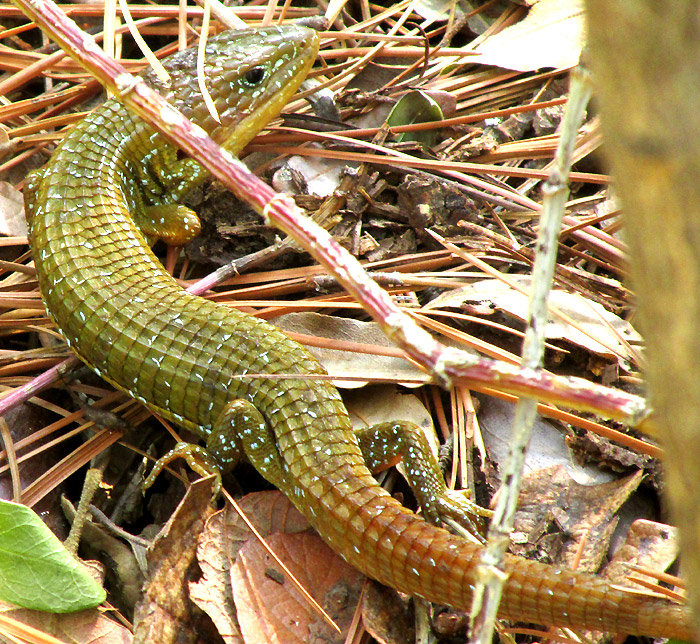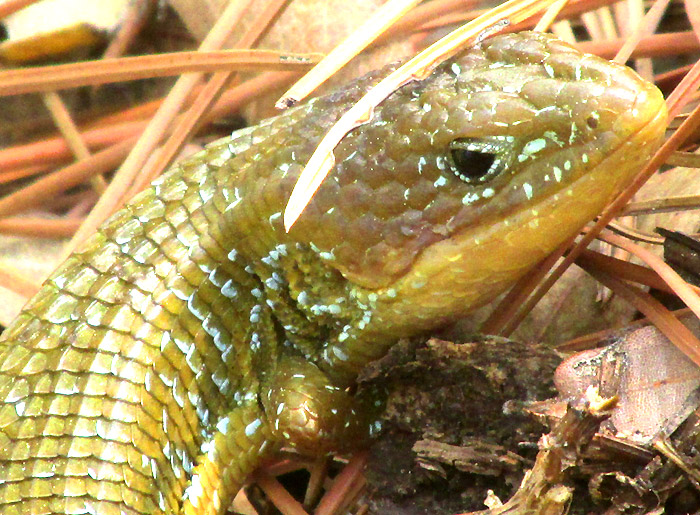Excerpts from Jim Conrad's
Naturalist Newsletter
entry from field notes dated May 7, 2023, atop hill forested with pines and oaks about 1km east of Curva de la Doctorcilla, on unnamed road connecting Hwy120 and El Doctor; limestone bedrock; elevation ±2650m (8700 ft); Eastern Sierra Madre mountains of east-central Querétaro state, MÉXICO, (N20.88°, W99.62°)
NORTHERN MEXICAN ALLIGATOR LIZARD

Atop a hill forested with pines and oaks, I almost didn't see the above lizard, despite her large size, about 18cm long (7inches). That's because her colors blended so well with the forest floor's dried-up pine needles and oak leaves, and the creature didn't move at all.

Being so large and distinctive looking, an image search on the general topic of Mexican lizards soon led to the Genus Barisia, whose species often are known as alligator lizards. In California we've encountered the Southern Alligator Lizard, which also was large, with prominent scales, and shaped like ours, but that was not only a different species but also a different genus.
The Barisia page at the RepFocus.DK website, with distribution maps of the seven currently recognized Barisia species -- all endemic just to Mexico -- indicates that only one Barisia species is known to occur here in Querétaro state, though their map excludes it from Querétaro's Eastern Sierra Madre mountains, where our lizard was encountered. The single species known to occur in western Querétaro is BARISIA CILIARIS, sometimes called the Northern Mexican Alligator Lizard.
But once again I gain the impression that animal taxonomy may be even a bigger mess than plant taxonomy. The RepFocus.DK website tells us that earlier our Barisia ciliaris was regarded as a subspecies of Barisia imbricata, but then it was "... Considered a separate species by Smith, Burg & Chiszar (2002), although Zaldivar-Riveron, Nieto-Montes de Oca & Laclette (2005) did not support this, followed by others (e.g., Valdez-Lares, Muñiz-Martínez, Gadsden, Aguirre-León, Castañeda-Gaytán & González-Trápaga 2013)." Earlier the two species were lumped, then separated, but several experts kept them lumped, but the RepFocus.DK website presents them as separate, reason unexplained.
Anyway, now photos of this individual from the mountains of eastern Querétaro, where no Barisia species are supposed to reside, are available for future experts.
Numerous taxonomical studies of the two or one species have been published, but little is known about their life histories. I read that females are olive-yellowish, like our lizard. Our individual was much more ornamented with white specks than seen in other photos, though some approach our speckledness.